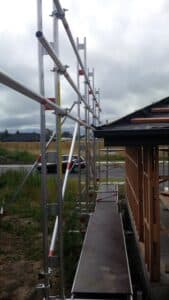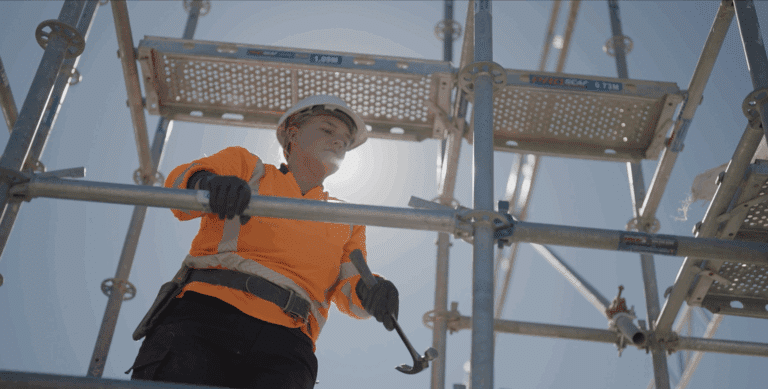A fall from height is the most serious hazard associated with roof work. Investigations from the Department of Labour shows that more than 50% of falls are from less than three metres in height and approximately 70% of falls are from ladders and roofs.
The Ministry of Business, Innovation and Employment have initiated set guidelines to address the issue through the ‘Preventing Falls from Height Project’. We have summarised the guideline below to give all who are involved with working on roofs a clear direction on how to manage the work in a way that will bring down the injury and death toll. The guidelines apply to a wide range of work situations where workers are placed in a position from which falls are possible, including repairs and maintenance work on roofs. Workers who need to access roofs include builders, plumbers, heating and ventilation installers, air conditioning installers, painters, home or property owners or inspectors, demolition contractors, and of course, roofers.
Managing Hazards Through Planning
Planning a safe approach to a job can help identify the hazards associated with any work on a roof. It’s important to identify, assess, control and monitor the hazard to safely complete a work. It is essential that the necessary types of equipment, such as roofing scaffolding, are properly used and installed. Ladders should only be used as a means of access, and for short duration maintenance work such as touching up paint. Enough time should be allowed to ensure availability of all equipment required to maintain compliance, complete the installation of the equipment and to allow for unsuitable weather.
It is the responsibility of the lead contractor or principal to inform all workers on site that they must adhere to the requirements of the work plan and safety information before anyone gains access to the roof.
Safely Access Roof Areas
Where there is no permanent access to roof areas, provide temporary access that is properly constructed and compliant to the Working at Height regulations. Scaffolding for roofs, portable stairs, constructed work platforms or mobile scaffold towers are the preferred means of temporary access.
Industrial scaffold towers must be stabilised with outriggers, or be securely attached to a solid surface when the height to width ratio is over 3:1. Mobile scaffolds should be checked for signs of damage or missing components every time they are assembled and should not be moved if a person is on the platform.
Before commencing work on any roof, inspect it thoroughly to determine its strength as roofing materials deteriorate over time. This should, when possible, include inspection from inside the building as well as externally. Working on surfaces where a person can fall two metres or more, edge protection must be provided.

Prevent Roof Falls with Edge Protection
Where there is a risk of a fall from or through the structure of a roof and there are no other means to prevent a fall, temporary edge protection and/or scaffolding for roofs should be installed.
EASYRAIL Edge Protection is the fastest edge protection system to install when working on roofs. This simple and lightweight roofing scaffolding solution can be easily installed by one person and can secure a building using a cantilever bracket. Easyrail is the ultimate safe solution for any low-level roof edge protection application and protects workers.
Roof edge protection is considered a passive fall prevention barrier because once erected or installed, it requires no further on-going adjustment. It is also a means of group control as it provides protection for anyone working on the roof. Working on or removing roofing material has the potential to expose workers to risks of falling from or through the roof. When replacing roof and wall cladding, scaffolding for roofs and temporary edge protection is the way to go.
Easy Rail is made in New Zealand and compliant to 4994:2009. Visit the range of EASYRAIL roof edge protection.
—







